Early this week, Fujifilm ran one of their sales that got my attention. The kilobuck 50mm f/3.5 for the GFX cameras was knocked down to half that. I didn’t really need the lens, but I bit. I guess I’m the kind of customer that Fuji was thinking about when they decided to do the massive price reduction.
I gave it my usual lens screening test — these are wide open at 25 meters:
I have a good copy. There is falloff in sharpness in the corners, but it’s pretty uniform. There is aliasing in all of the images, so the lens should be plenty sharp enough. It’s certainly miles ahead of your average five-hundred-buck full frame camera lens.
I ran an f-stop series with the Siemens Star at about 40 feet. In the center, at about 180% magnification:
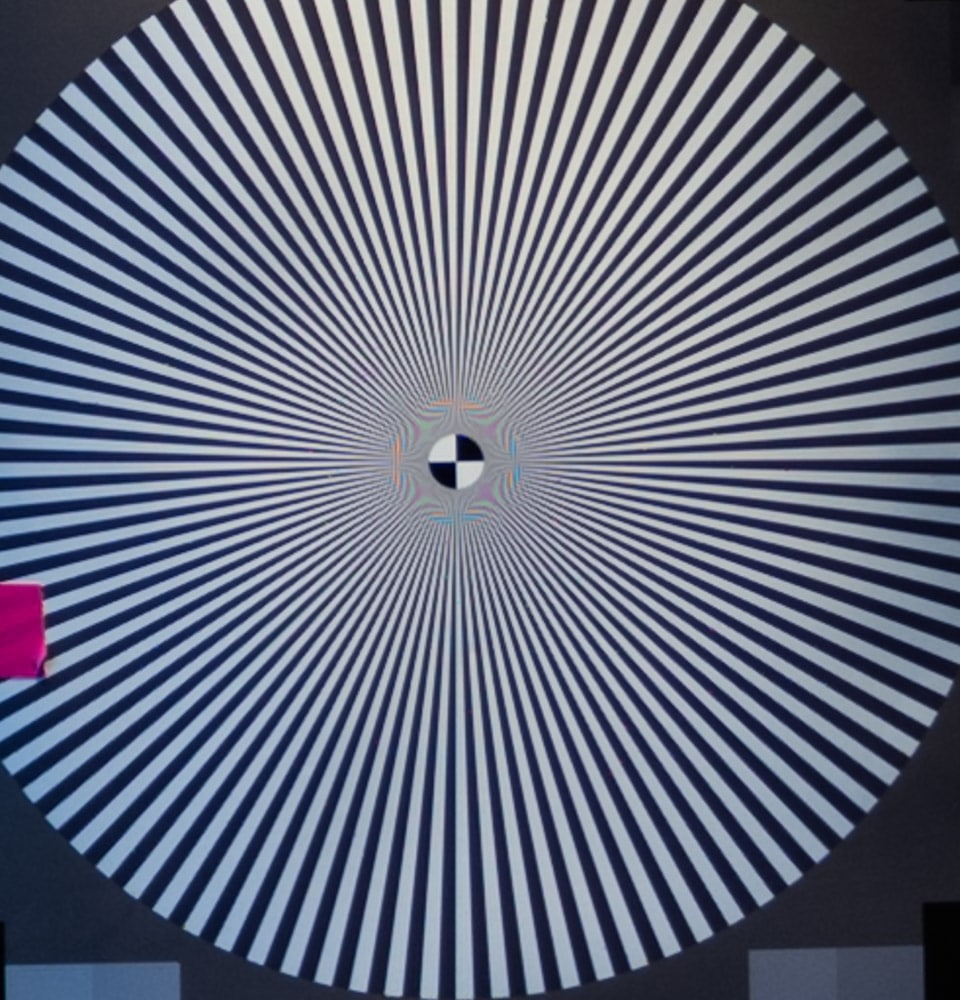
This is excellent performance for a simple lens. I am reminded of the sendup of a wine taster: “It’s a naive little domestic, but I think you’ll be amused at its presumption.”
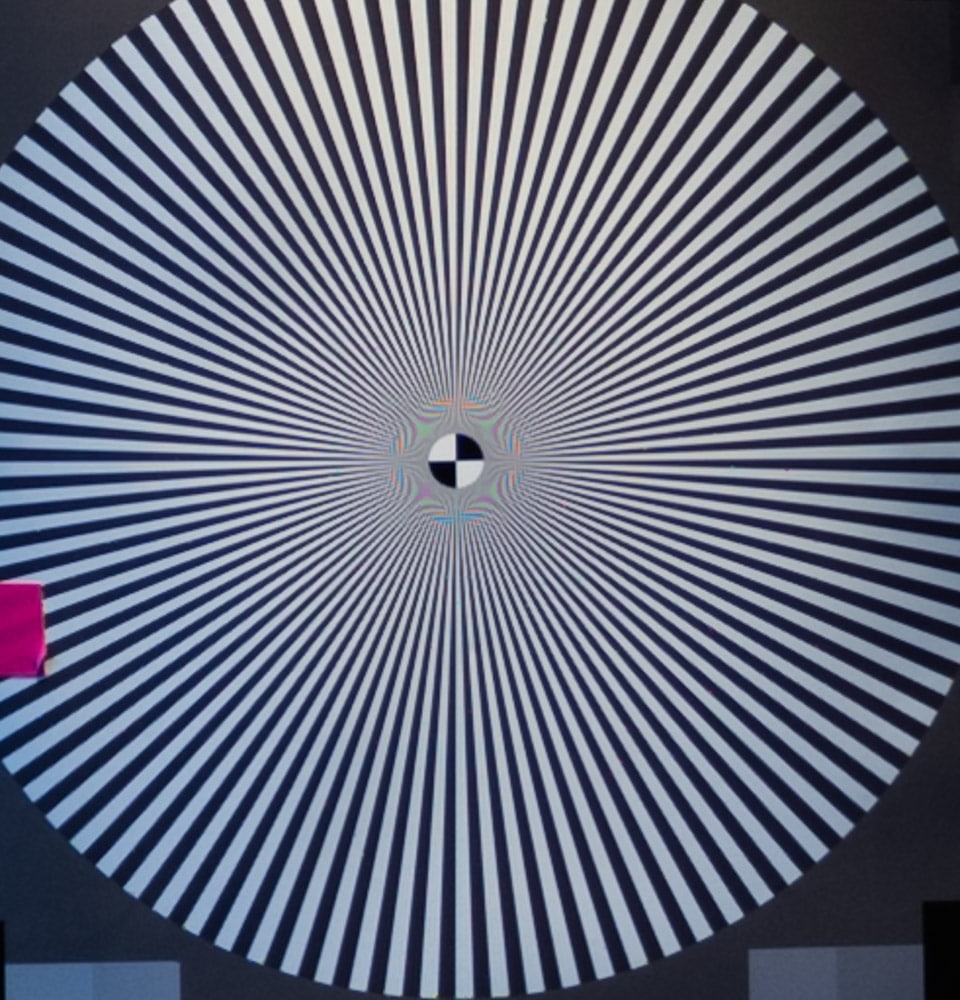
Not much difference, as you’d expect. It’s only a third of a stop difference.
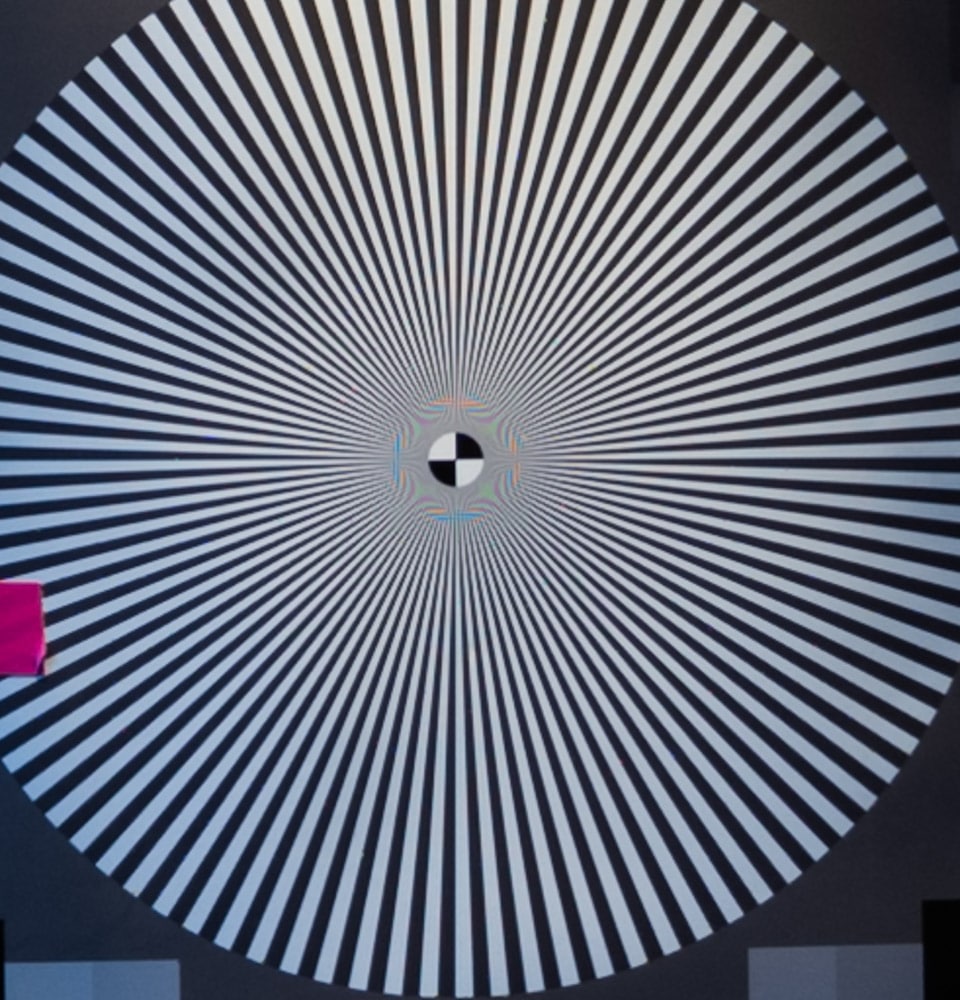
It’s not materially sharper at f/5.6 than it is wide open!
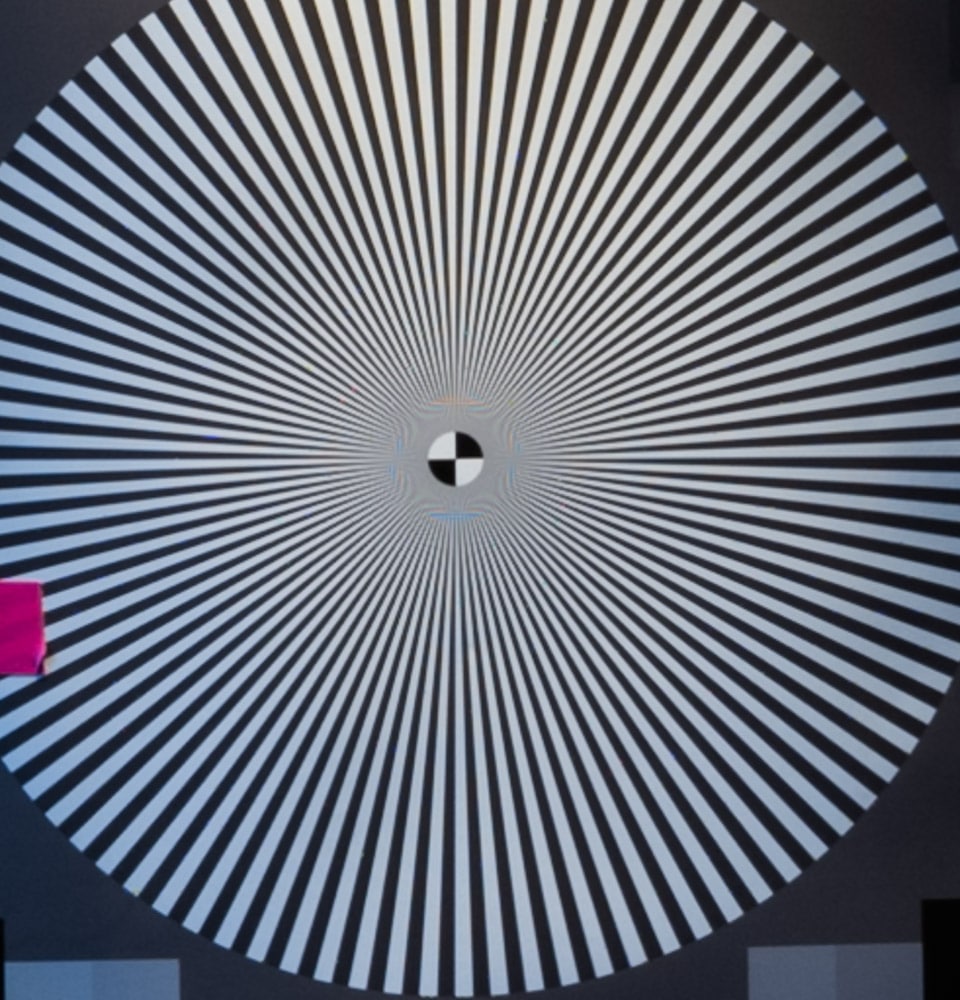
Now we’re getting a little softening, but it’s still quite crisp.
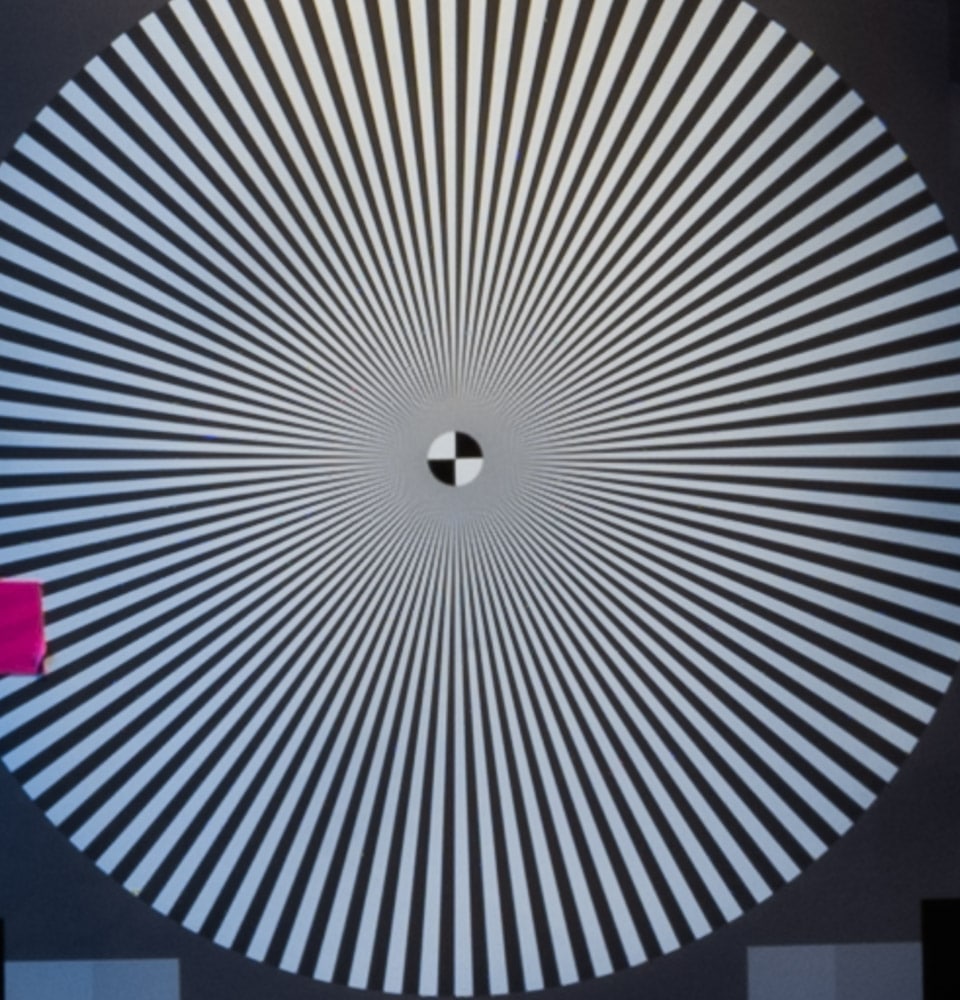
There’s still a tiny bit of aliasing, indicating that the lens is still laying down detail that the 100 MP sensor can’t resolve.
In the lower left corner:
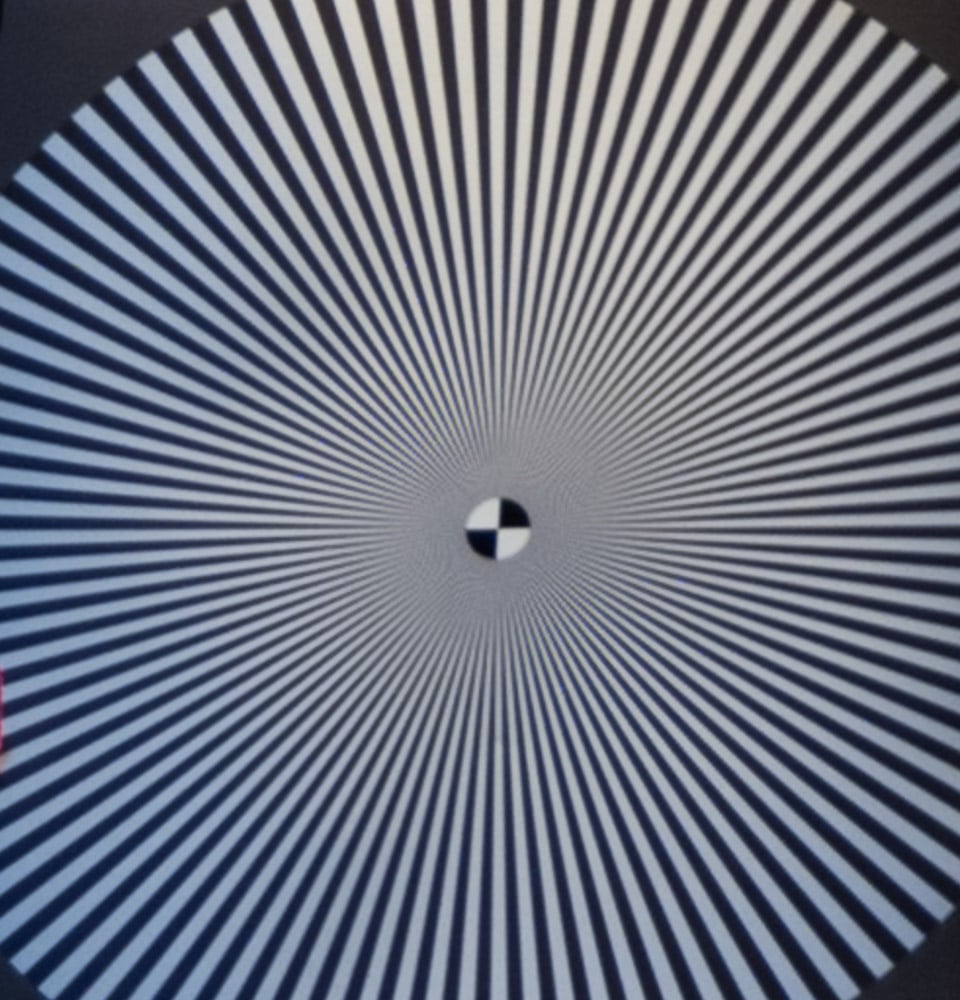
Definitely not resolving as well as in the center, but this is excellent performance for a simple lens wide open.
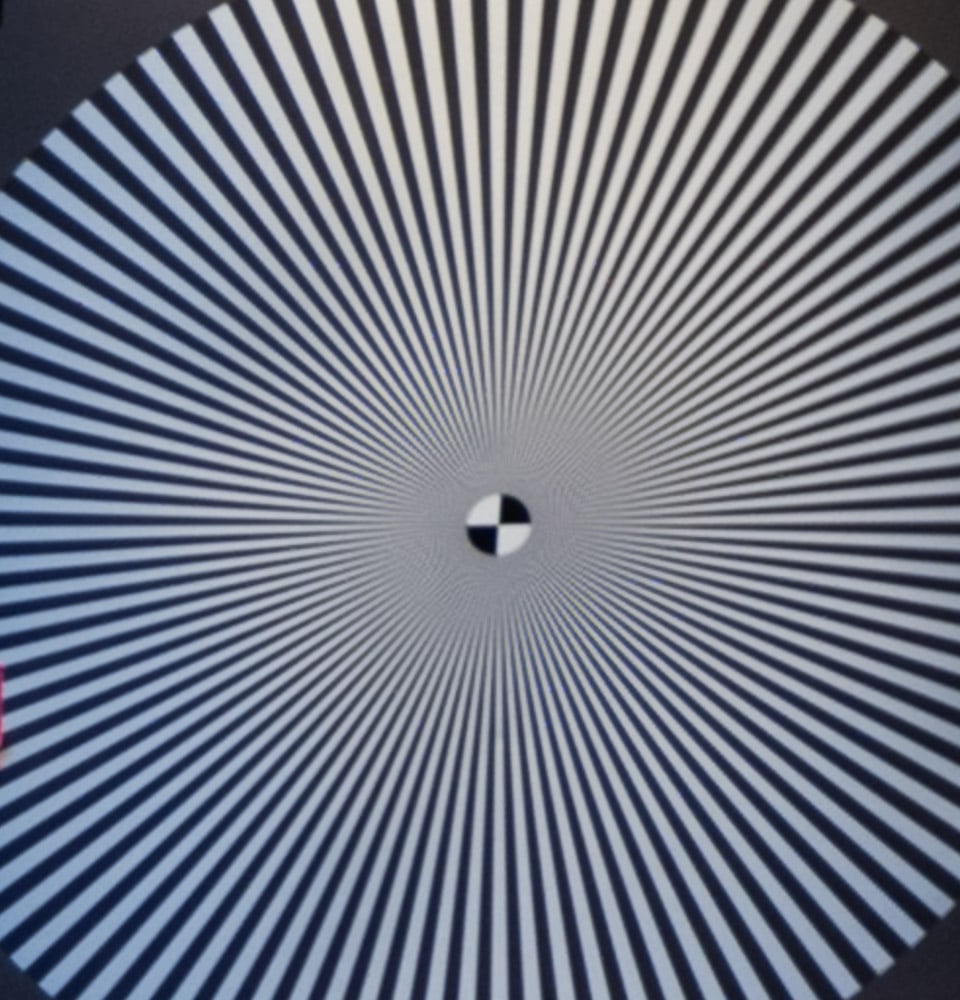
Some improvement.
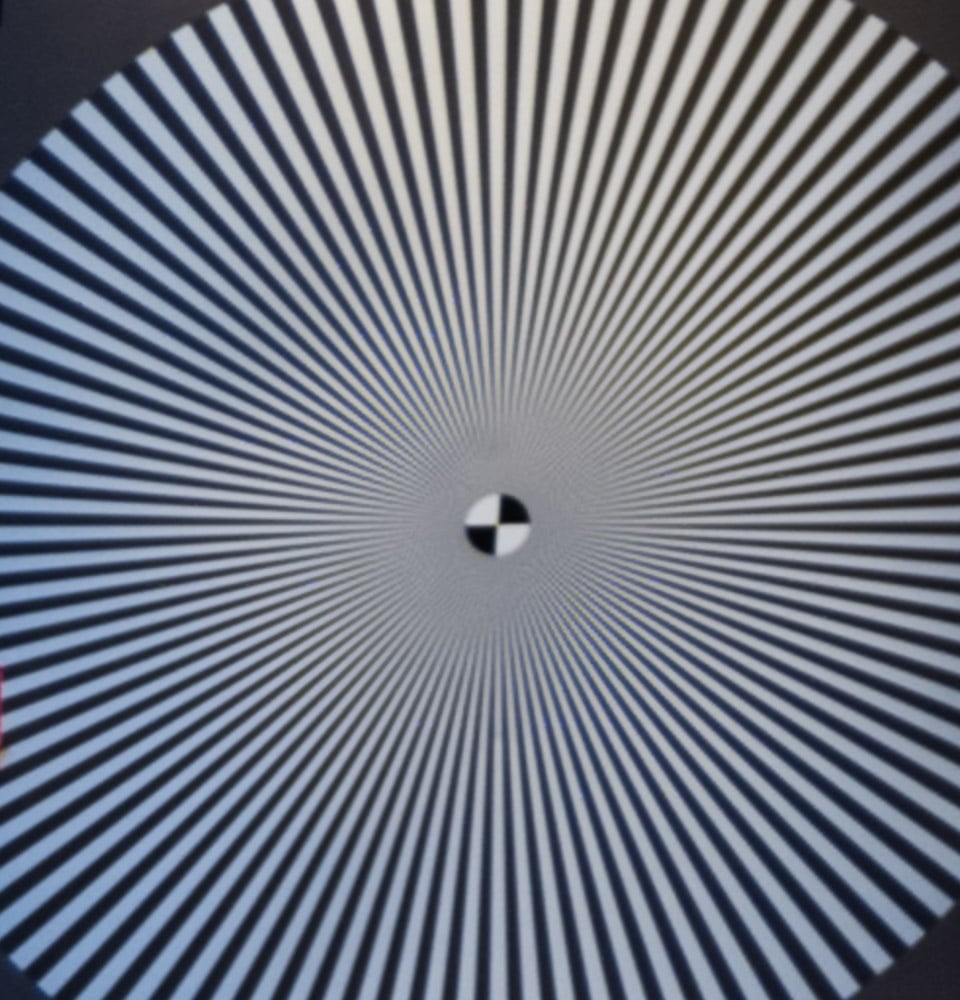
No better.
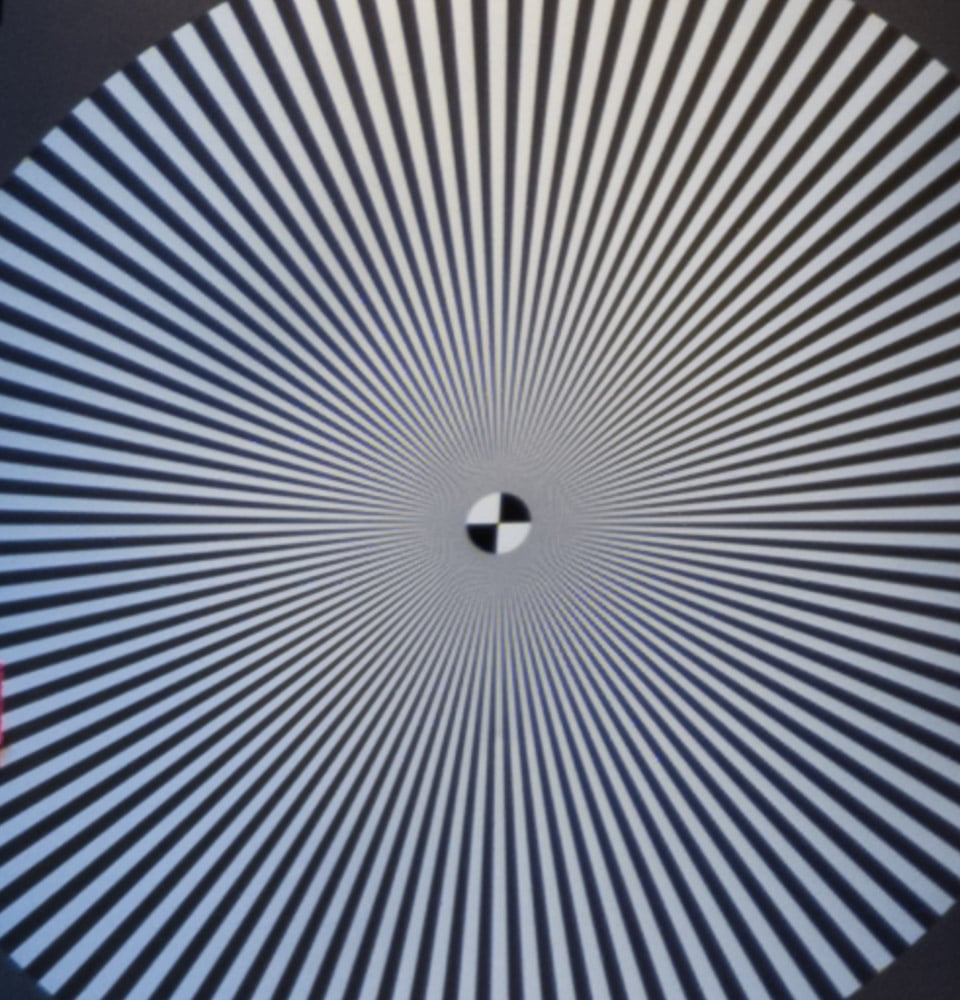
This is as good as the corner gets.
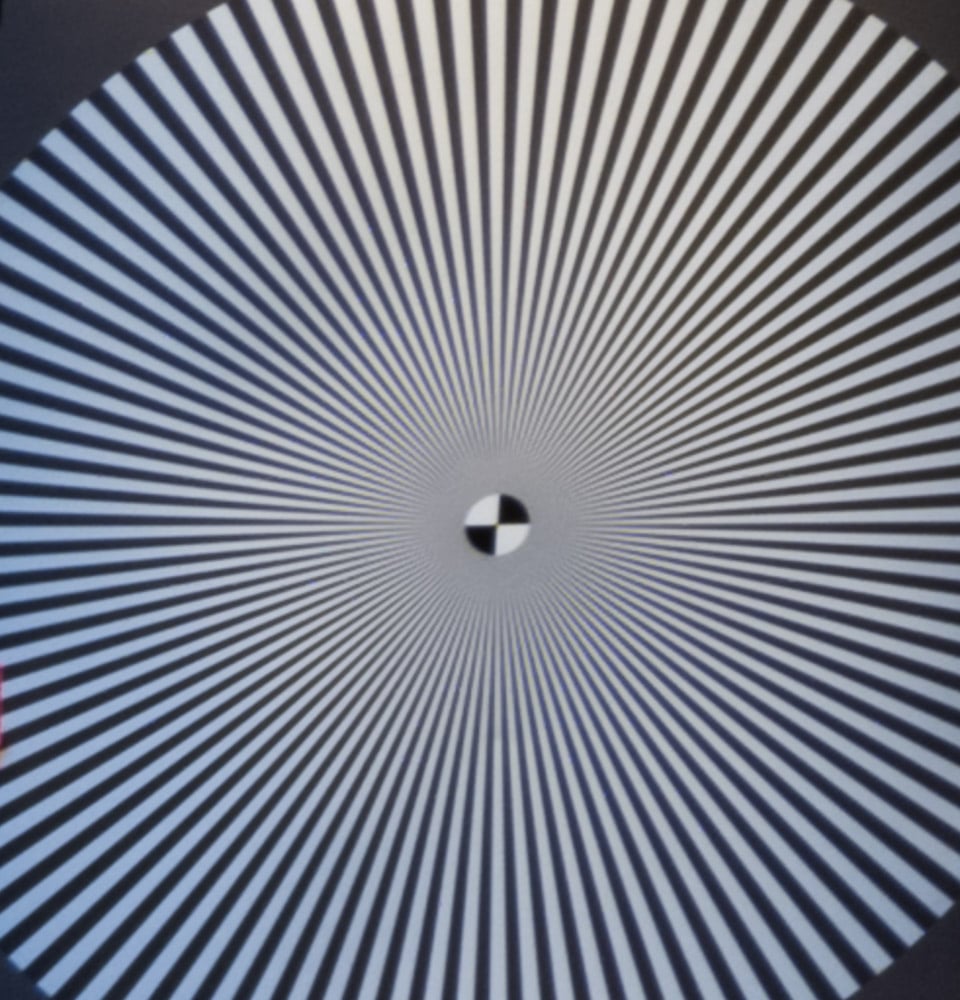
Softening up.
This looks like a good sample of a fine lens.
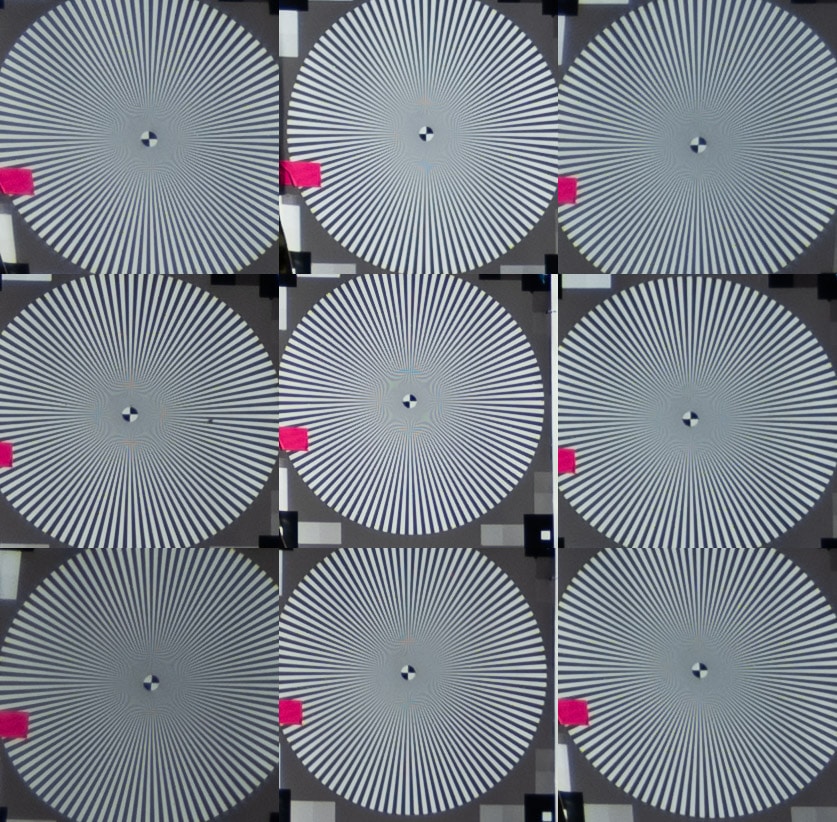
Thank you
Thank you
Thank YOU!
As I’ve said previously, I’ve got to stop reading your tests of Fuji medium-format equipment, lest GAS get the better of my rationality, and the discs in my lower back start to protest even louder than they already do. Still, if Fuji ever releases a 100-150 MP smaller-body MF camera, to go with some of these smaller (but apparently still very good) Fuji lenses, I might be tempted.
One thing, though, with Fuji MF, I’d sorely miss a macro lens that can get down to imaging a full-frame (24 x 36 mm) object area. That’s mostly standard on full-frame modern macro lenses.
Instead, Fuji’s macro only gets down to 1:2 and on MF, that’s even worse (on Fuji MF, ~ 66 x 88 mm, a larger object area than 1:2 on full frame.
In contrast, an A7R iv has several 1:1 magnification lenses available, and could potentially make use of the E-mount version of the new Laowa 65mm f/2.8 2x Ultra Macro APO, which just got a great review (in Fuji APS-C mount) at Optical Limits, and gets down to an ~ 8 x 12 mm object area without accessories (albeit projecting that onto only the APS-C area, at ~26 MP, and manual focus only, so probably necessitating an automated focusing rail for many focus-stepping applications). Any chance that lens’ reported quality and capabilities, and reasonable price, intrigue you enough to acquire one and test it on your A7Riv?
I don’t think so, but I have a CV 110/2.5 Apo-Lanthar on order.
The CV 110mm Apo-Lanthar is also of interest to me, so I’ll look forward to your write-up when you put it through its paces.
No need for the 65. There’s a Laowa $450 full frame 100/2.8 apo that goes to 2:1 magnification as well.
@CarVac:
Thanks for the info, I didn’t realize that the Laowa 100mm also went to 2:1 magnification.
You can attach the larger of the two GF macro extension tubes for 1:1 magnification with the GF120mm lens.
True enough. I have done that many times. That won’t a image a full-frame (24 x 36 mm) object area on the 33×44 sensor, though.